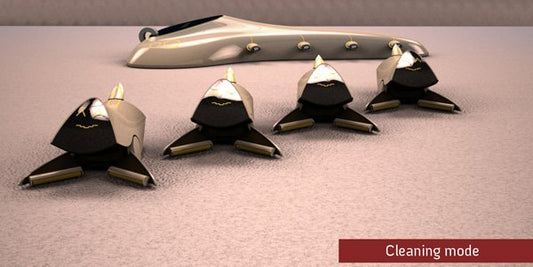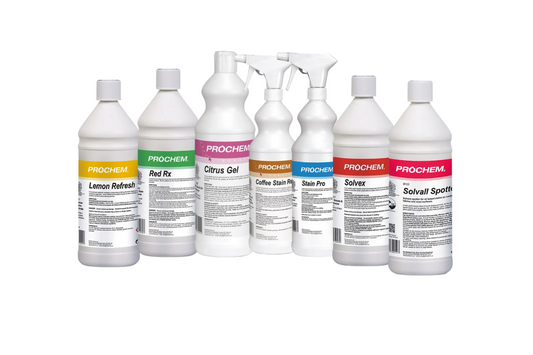Over recent years we have seen an increase in asthma and allergies, which has triggered concerns over the chemicals in products we use on a daily basis, such as cleaning supplies.
Whether you share these concerns or not, it’s worth finding out more about the ingredients in average household cleaning products and how they could affect you. There are many chemicals used in traditional products, but below you’ll find a list of the most common:
Perchlorethylene
Perchlorethylene can be found in some carpet and upholstery shampoos as well as in paint remover formulas.
Dangers: Is said to be bad for the kidneys, liver and is a nervous system depressant. Repeated exposure also causes symptoms such as headaches and dizziness.
These dangers occur with repeated or chronic exposure.
Perchlorethylene has low toxicity.
Ammonia
Ammonia is mainly used in agriculture as a fertilizer, but can also be found in both commercial and domestic cleaning products. Commercial or industrial products use approximately 25% ammonia in their formulas, whereas 5-10% ammonia can be found in household products.
Dangers: Inhaling low levels of ammonia can cause symptoms of coughing and nose and throat irritation. The chemical can also cause irritation when it comes into contact with skin and eyes.
NEVER MIX AMMONIA AND CHLORINE BLEACH – this will release the poisonous gas, Chlorine gas.
Phosphates
Phosphates are found in laundry and dishwasher detergents, but primarily used as a water softener.
Dangers: Phosphates are also fertilisers and so when this chemical is washed away, it dissipates into rivers, promoting algae growth and thus polluting the natural ecology of the water.
Triclosan
Triclosan can be found in cleaning products and other household goods.
Dangers: Triclosan is suspected to have damaging effects to human health. Statements made by several major British retailers have said they hope to phase it out of their available products. It is dangerous due to it characteristic to kill friendly bacteria.
Chlorine
Chlorine is in bleach, but originates as a poisonous gas used in the Great War.
Dangers: Low levels of exposure are considered safe as chlorine is present as a disinfectant in water. However, it has been argued that consistent low levels of exposure can weaken the lungs.
NEVER MIX OTHER CLEANING PRODUCTS THAT COULD CONTAIN CHLORINE – this can produce toxic fumes consisting of chlorine gas, chloramine and nitrogen trichloride.
To accommodate those who are environmentally conscious, Click Cleaning supplies an extensive selection of environmentally friendly products as well as traditional.
Click Cleaning’s Environmental Friendly product range includes well known brands such as: Ultra Dose, Acorn and Eco Force.




